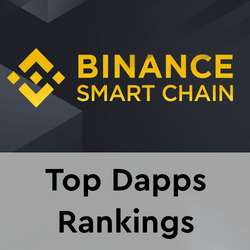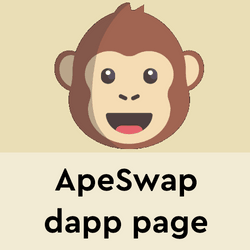DeFi becoming active across multiple blockchains, doesn’t mean the fall of Ethereum. But what does it mean?
The recent months have witnessed the ascend of dapps such as 1inch, Sushi, and ParaSwap, using the multichain infrastructure of Ethereum-compatible alternatives like Binance Smart Chain (BSC) and Polygon. What does all this mean in terms of Ethereum’s long-standing dominance?
For some time now, the multichain paradigm has been grabbing attention in the world of DeFi. This is mainly because of the promise to offer faster and cheaper services than what is currently provided by the old player in the field – Ethereum. The best part? They also offer interoperability with other platforms, Ethereum included.
The rise of the multichain phenomenon is best evident in the transactions on Polygon and BSC dramatically overshadowing those carried out on Ethereum. At the moment of writing, BSC had 3,3 million daily transactions compared to Ethereum’s 1,2 million. At the same time, the Polygon network chalked up a staggering 8 million.
Even more interesting is the fact that, at the peak of its activity in mid-May, BSC was reaching nearly 12 million daily transactions, compared to Polygon’s 9 million. Polygon’s surprising growth can be attributed to the significantly lower transaction fees, leading even those yield farmers active on BSC to switch to the Polygon network.
DeFi platform going multichain
The appeal and capabilities of these new platforms have driven the growth of multichain DeFi products like:
- 1inch: a decentralized exchange (DEX) aggregator network that unites decentralized protocols for aggregation, liquidity, and limit order to facilitate faster, safer, and more lucrative DeFi operations. In February, its native token launched on BSC to become a bridge between the Binance and Ethereum networks. In May, the platform also expanded to Polygon. Right now, 1inch is the tenth-largest dapp on BSC and eleventh-largest on Polygon in terms of unique wallet addresses.
- Sushi: a community-driven DeFi platform providing a full DeFi product stack, Sushi is a fork of Uniswap, but now carries a suite of features not yet available at Uniswap. It shows an unstoppable tendency for growth in face of a general downward trend of the majority of the rest of the crypto market. Featured on Ethereum for nearly a year, SushiSwap had only 4,194 unique active wallets but since going live on Polygon in March, this number has already topped 27,000 mid-June.
- ParaSwap: a multichain token swapping platform that launched on Ethereum back in December, broke into Polygon in April, and BSC in May. It has already attracted thousands of active users and transactions per day on the Polygon Network, generating billions in volume. This is much more than on its Ethereum and BSC versions, where it averaged less than 1k daily transactions.
What is behind this extreme growth?
Ethereum is currently the dominant infrastructure for DeFi creators – thanks to its liquidity, community of developers, robust safety features, and the potential of seamless composability with other DeFi products. However, it isn’t without problems.
It has low throughput, delayed finality, and poor user experience in terms of gas fees. The latter especially hinders current DeFi activities on Ethereum, along with any significant mainstream adoption. This becomes even more relevant with the increasing sophistication of dapps that requires increasingly more gas to function.
To overcome these problems, yet continue relying on Ethereum’s powerful ecosystem, many projects have been turning to Ethereum-compatible blockchains, such as the independent BSC and Ethereum’s layer 2 scaling solution Polygon. These multichain platforms provide everything a new DeFi user requires – speed, safety, efficiency, and low fees – a combination they couldn’t find on Ethereum.
In contrast to the Ethereum network, which imposes gas fees to every single transaction, these multichain ecosystems link with each other and scale in their own unique ways. This allows them to reduce most of the system costs to a minimum.
They facilitate scalable functionality for DeFi products which can retain their liquidity on Ethereum at the same time. This pushes these products toward growth and development past a single environment, potentially leading to more competitive costs than solely Ethereum-based projects.
The above established Ethereum apps like 1inch have certainly helped the multichain cause, as they brought their users with them to these new environments. More recently, BSC dapps have started increasingly moving over to Polygon seeking further market share.
Multichain is the future
While this might look like a clear case for multichain environments versus Ethereum, things are more complex than that.
Ethereum may be processing a lot fewer transactions than either BSC or Polygon, but the value flowing through these transactions paints a different picture, with Ethereum coming out as a winner.
In other words – although BSC and Polygon dapps attract users in great numbers, Ethereum dapps are still taking care of a large chunk of the value. This means that whale investors and maximalists still prefer Ethereum finance dapps. New users, on the other hand, prefer the alternatives.
All things considered, it’s clear that the complex multichain story has only just begun and we’re looking forward to seeing what the future holds and how the DeFi space transforms once again with the long-awaited emergence of Ethereum 2.0.
- Bitcoin
- blockchain
- blockchain compliance
- blockchain conference
- coinbase
- coingenius
- Consensus
- crypto conference
- crypto mining
- cryptocurrency
- DappRadar
- decentralized
- DeFi
- Digital Assets
- ethereum
- machine learning
- non fungible token
- plato
- plato ai
- Plato Data Intelligence
- PlatoData
- platogaming
- Polygon
- proof of stake
- W3
- zephyrnet












